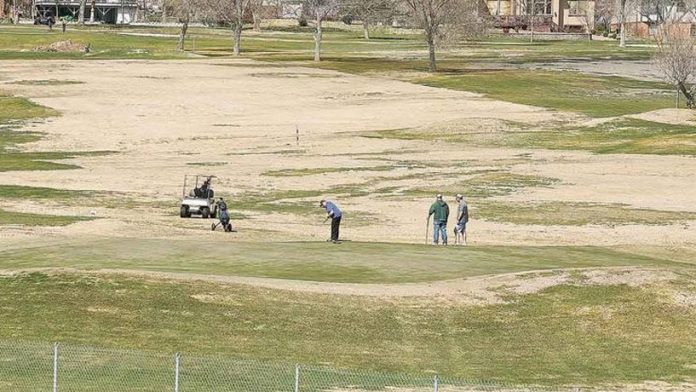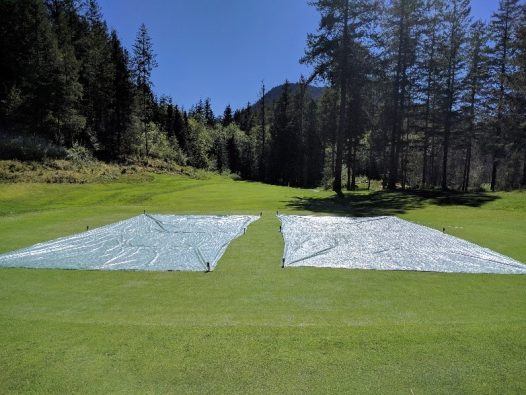
It has been a long winter and everyone including yourself is excited for the upcoming golf season. The only problem is that you are one of the unlucky ones who experienced winterkill. There are many reasons why turf dies in the winter but that doesn’t matter right now. What matters is getting the course back in good condition ASAP.
A few years ago, we lost half of our greens to a freak winterkill event. It was the second time this had happened at my course in 20 years and this time I chose to approach it differently than I had in the past.
It’s easy to blame yourself as a turfgrass manager but from what I’ve learned over the years, the conditions that lead to winterkill are usually completely out of your control. Mother nature is the boss. With this understanding it is important to approach this difficult situation with a positive attitude and know that as a professional turfgrass manager you aren’t to blame; you are the club’s only hope for a quick recovery and for getting everyone back golfing. You’re not the culprit, you’re the hero.
Unfortunately, the conditions that typically lead to winterkill also make it extremely tough for turfgrass recovery. Namely it’s the cool temperatures that make bringing turf back from the brink extremely challenging. While we can throw down seed and apply extra fertilizer, we are often at the mercy of warmer temperatures to get the course back in good condition.
With my extensive growth rate database, I was able to see the impacts the extra fertilizer applications made on spring growth rates. The recovering greens were growing at over 3x the rate of the undamaged greens but this still isn’t enough. A week’s worth of extreme growth in April is less than a day’s worth of growth in June so while it’s better than nothing, it’s still not enough.
So, what can we do as grass experts to make things warmer?
Tarping was a huge help. I couldn’t afford fancy tarps so we just used black tarps from the hardware store and covered the greens overnight to keep the heat in and took them off in the late morning. This helped warm the soil and got the grass growing even faster. Of course, using purpose built permeable tarps for turfgrass are always ideal but sometimes you need to improvise. With air temperatures hardly enough for any growth we were getting temperatures in the mid to upper 20’s under the tarps. All of a sudden, we had growth like we do in the summer.

Getting grass to grow from seed is also a challenge with cool temperatures and this is where I turned to seed priming to trick the grass to grow when it shouldn’t. Seed priming is basically germinating the seed indoors and then planting it once it has already started growing. The process takes careful observation and lots of work to manually spread the seed but it will get your grass growing weeks before it would normally grow naturally. Make sure you poke lots of holes for the grass to grow in. If you think you have enough, double it!
Here’s my recipe for seed priming success. Mix seed in water and store overnight at 30 celcius. Drain the seed in the morning and mix with a sand and peat mixture. Moisten and store indoors. Watch seed daily for signs of germination. It took about 3 or 4 days for my bentgrass to “pop”. The problem now is that it’s almost impossible to use equipment to spread moist seed that’s already growing. The solution is to dilute the primed seed in a larger quantity of sand and spread it by hand into the prepared seedbed. Once spread on the greens a quick brush or blow will help seat the seed into the holes. Follow this with a roll and tarps if you have them.
The last heroic effort I would recommend is vegetative propagation. If you have some healthy turf you can use it to get grass growing on the damaged areas. Core aerify your damaged areas with large shallow tines. Like ¾” or larger diameter. Remove the cores. Now core a healthy green with smaller tines and take these cores and spread them on the damaged areas. Brush and roll in and keep moist. Again, tarping will help speed the recovery process.
Remember, in almost every case you as a greenkeeper are not to blame for the winter damage but you are the one that is needed to bring them back. Communicate your difficulties and what you are doing to overcome them. This can turn a bad situation into a positive one. Good luck with the upcoming golf season. Take care.
About the author:
Jason Haines is the golf course superintendent at Pender Harbour Golf Club in British Columbia, Canada. He is a passionate turfgrass manager with a love for the outdoors and enjoys trying new things and pushing his personal boundaries. Haines achieved a diploma in turfgrass management technology from NAIT (Fairview College). He also received an award from Golf Course Industry magazine in 2014 for Best Blog/Savvy Social Media and was a Merit International Winner for the 2017 Environmental Leaders in Golf Awards. He is an active user of social media (@pendersuper) and has been sharing his ideas about greenkeeping on his blog www.turfhacker.com since 2011.











